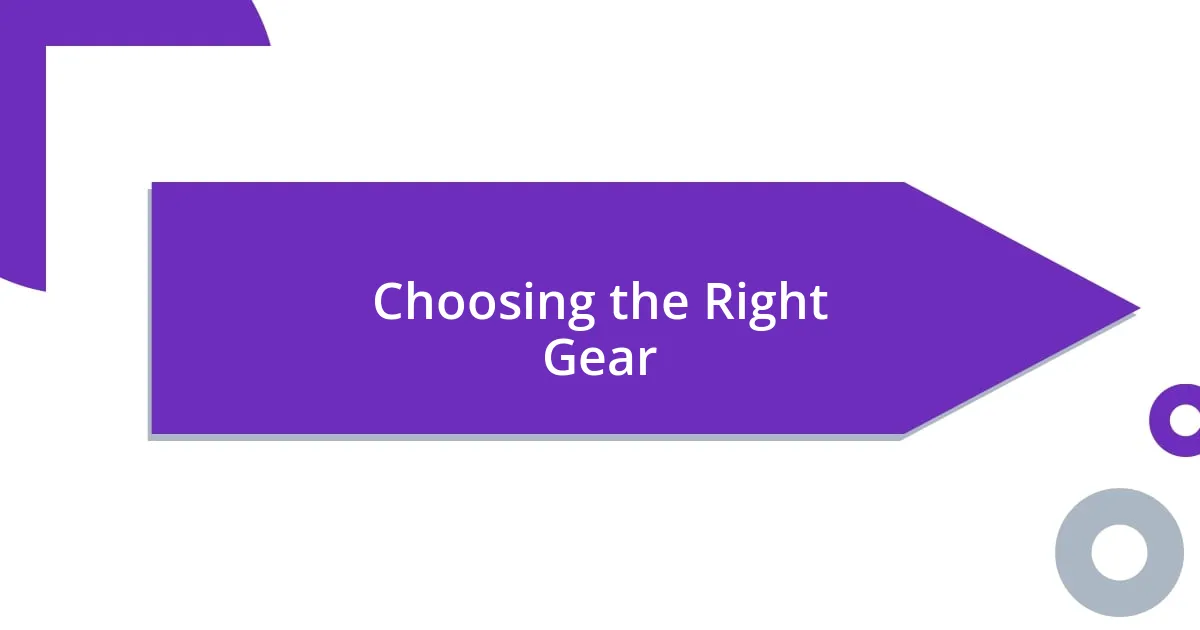Key takeaways:
- Capturing movement in portraits transforms static images into vibrant narratives, conveying emotions and stories.
- Choosing the right gear, including a fast camera, versatile lenses, and stabilization equipment, is essential for effectively capturing dynamic moments.
- Key camera settings such as fast shutter speed, appropriate aperture, and adjusted ISO are crucial for freezing motion and enhancing portrait quality.
- Post-processing techniques like motion blur effects, adjusting contrast and saturation, and thoughtful cropping can elevate the emotional impact of dynamic portraits.

Understanding Movement in Portraits
When I think about movement in portraits, I’m reminded of the joy of capturing a fleeting moment that tells a story. It’s fascinating how a slight shift in posture or an ephemeral gesture can inject life into a still image. Have you ever noticed how a child’s spontaneous laugh or a dancer caught mid-twirl communicates energy? That’s the beauty of movement—it transforms a static portrait into a vibrant narrative.
I remember photographing a couple during their first dance at their wedding. As they twirled, the movement wasn’t just about motion; it was a portrayal of their love and connection. The way their expressions changed, the laughter, the slight changes in their grip—each element seemed to pulse with emotion. How can a photographer convey that same essence in other contexts? Understanding the dynamics of movement allows me to anticipate those moments, enabling me to focus on timing and composition effectively.
Movement also speaks to the rhythm of life itself. A portrait that freezes time creates space for reflection, and often, I find myself thinking about what came before that moment and what lies ahead. Isn’t there something deeply compelling about catching someone in a dance of joy or even in a pause of contemplation? Each snapshot holds the promise of a larger story, inviting viewers to step into that world and feel the heartbeat of movement within the frame.

Choosing the Right Gear
Choosing the right gear is fundamental when capturing movement in portraits. I often find myself reaching for a fast camera with a high continuous shooting rate to keep up with the action. A camera that can shoot at least 6-8 frames per second helps me capture those fleeting moments that tell a vibrant story—a smile, a leap, or even a subtle glance.
Lenses are equally crucial; I prefer a versatile zoom lens, like a 24-70mm. It gives me the flexibility to shoot from different distances without losing the essence of the moment. When I photographed a dancer practicing in a studio, my zoom lens allowed me to capture the intensity of her movements from a distance, and then quickly zoom in for a close-up of her expressive face. It’s incredible how the right lens can make all the difference in conveying emotion.
Lastly, don’t overlook the importance of stabilization gear. A good tripod or even a gimbal can help prevent unwanted shake, especially during dynamic scenes. I once shot a portrait while my subject was leaping off a small ledge. My tripod allowed me to remain stable, ensuring that even in the chaos of movement, the image remained crisp and clear. Choosing the right gear means preparing yourself to capture the heartbeat of life in every frame.
| Gear Type | Importance |
|---|---|
| Camera | Fast shooting rate for capturing fleeting moments |
| Lens | Versatile zoom for flexibility in framing |
| Stabilization equipment | Minimizes shake for clearer movement shots |

Camera Settings for Motion
When it comes to capturing movement, getting your camera settings dialed in can make all the difference. I often find myself adjusting the shutter speed to freeze motion effectively. A faster shutter speed, say 1/500th of a second or more, ensures that even the swiftest gestures appear sharp and well-defined. During a recent family photoshoot at the beach, I opted for 1/1000th of a second while the kids splashed in the waves. The result was stunning—each splash of water sparkled like diamonds in the sun, and their joy was perfectly preserved in time.
Here’s a quick reference for key camera settings I prioritize:
- Shutter Speed: Use at least 1/500th of a second; faster for high-speed activity.
- Aperture: Aim for a wider aperture (f/2.8 to f/4) for a beautiful background blur, keeping focus on the subject.
- ISO: Adjust ISO based on lighting; keep it low for bright scenes, but raise it in low light to avoid motion blur.
Balancing these settings also ties into my approach to f-stop. A lower f-stop allows for captivating depth of field, honing in on the subject amidst a dreamy backdrop. I remember a lively dance performance I shot recently; by setting my aperture to f/2.8, I was able to isolate the dancer against a softly blurred crowd, evoking a sense of intimacy even amidst the buzz of movement. This way, I create not just portraits, but emotional snapshots that resonate deeply with the viewers.

Techniques for Capturing Movement
Capturing movement requires a keen eye for timing and technique. One approach I often use is panning—a technique where you move your camera along with the subject as they move past you. This can create a dynamic effect where the subject is sharp, but the background blurs dramatically. I vividly remember shooting a cyclist racing down a hill; as I panned, I could almost feel the rush of wind against me. The final image was exhilarating, showing both the speed and intensity of the moment.
Another effective technique is utilizing burst mode to capture a sequence of movements. I usually switch to continuous shooting when photographing someone dancing. This way, I can capture a series of poses in quick succession. Just the other day, I was at a wedding where the couple shared their first dance, and by firing off several frames, I was able to immortalize the enchanting twirl of their bodies and the joyous expressions on their faces. It’s like telling a story through still images, where each frame adds to the narrative.
And let’s not forget about incorporating leading lines or natural frames in your composition to guide the viewer’s eye. I once attended a street performance, and by framing the acrobat with the surrounding crowd, I drew attention to their daring act while still capturing the excitement of the spectators. It reminded me of how every movement, whether grand or subtle, has the potential to tell a meaningful story. How do you envision movement in your portraits?

Post Processing for Dynamic Portraits
Post-processing plays a crucial role in enhancing the energy of dynamic portraits. After a lively shoot, I love diving into editing software to emphasize the movement captured in my images. For instance, when I recently edited a series of playful shots at a park, I used motion blur effects selectively to accentuate the swish of a skirt or the arc of an arm, creating a sense of action even beyond the initial capture. It’s incredible how a few thoughtful adjustments can transform an image into a vibrant story.
I often find that tweaking contrast and saturation can vastly improve the emotional impact of my portraits. During a recent event, I experimented with increasing the vibrancy of colors in photos of dancers, which made their outfits explode with life against a muted background. Suddenly, you could almost feel the rhythm of their movements, inviting the viewer to experience the pulse of the moment. Have you ever noticed how color can evoke specific feelings? I believe it’s a powerful tool that can either energize a portrait or set a more contemplative mood.
Finally, don’t underestimate the power of cropping. I remember a moment when I captured a skateboarder soaring through the air, but the initial composition didn’t quite convey the thrill. By cropping the image to focus more tightly on the subject and the board, I was able to amplify the sensation of height and speed while eliminating distractions. It’s fascinating how a simple change can shift the viewer’s attention. What adjustments have made your captured moments feel more alive?

Examples of Movement in Portraits
When I think about movement in portraits, one vivid example comes to mind: a dancer spinning elegantly on stage. I took a shot just as she twirled, her dress billowing out in a whirl of colors, creating that dreamy effect. The movement added a layer of storytelling, capturing not just her form but the very essence of joy and freedom in dance. Have you ever wondered how movement can transform a static image into a moment brimming with life?
Another great example is candid moments during family gatherings. I remember capturing my niece as she dashed toward her grandparents, arms wide open for a warm embrace. The happiness on their faces combined with her dynamic motion told a heartwarming story of love and connection. Isn’t it magical how such fleeting moments can be frozen in time, forever evoking the emotions behind them?
In my experience, sports portraits are another realm where movement shines. I once photographed a soccer player making a swift kick. The intensity in his expression, paired with the kick’s motion, conveyed the raw energy of the game. I couldn’t help but feel that the image not only showcased athleticism but also the passion and commitment behind every play. How does movement in your images encapsulate the energy of the moment?

Tips for Successful Portrait Photography
When capturing portraits, I’ve learned that lighting can make all the difference. Recently, I photographed a friend dancing in the golden hour, where the warm sunlight streamed through the trees, casting playful shadows. This not only highlighted her movement but also added an ethereal quality to the shot—it’s curious how lighting can elevate a simple moment into something magical, right?
I’ve also found that connecting with your subject can unleash their most dynamic expressions. During a shoot with an aspiring actor, I started telling funny stories to make them laugh. The resulting candid shots, filled with genuine joy and spontaneity, perfectly encapsulated their personality. Have you ever tried that? In my experience, engaging your subject on a personal level often yields the most vibrant, authentic movements.
Don’t forget about the power of perspective in your portraiture. I once experimented with a low angle while photographing a bicycle rider soaring off a ramp. This viewpoint not only emphasized the height and thrill of the moment but also made the rider appear larger than life. It’s fascinating how changing your position can drastically alter the narrative of an image. How do your angles contribute to the feeling of motion in your portraits?














